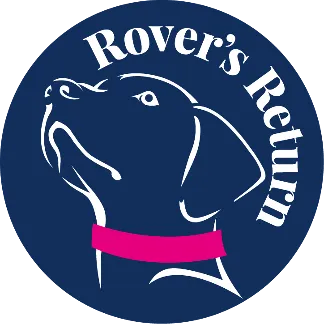Book a FREE 1:1 Assessment Call By Clicking HERE
Specialising In Dog Reactive Behviour
Accredited by APDT, ABTC and UK DOG Behaviour and Training Charter
Qualified and Experienced
Force Free Trainer and Behaviourist
Dog Training Leicestershire Educational Blogs

What Is The Best Method Of Dog Training?
What is the Best Method of Dog Training? Insights from Leicestershire
Best Dog Training Tips For Beginners
Dog training is a crucial aspect of owning a pet. It not only helps in managing the behaviour of your dog but also strengthens the bond between you and your furry friend. However, with numerous dog training methods available, it can be confusing as to which training method is best for your pet.In this blog post, we will explore some of the most effective dog training methods, with a particular focus on dog training in Leicestershire.
Due to the popularity of social media, dog training videos are all over FB, Tik Tok and Instagram. But what do you know about the people behind the videos? What methods do they use to train dogs?
Would it shock you to know that two popular TIK TOK trainers who have thousands of followers promote the use of prong collars and e-collars on dogs? You rarely see these used in videos but I have had clients who have experienced the promotion of harmful, cruel tools such as prongs and e-collars. This is happening in dog training in Leicestershire!
What is the most effective method of dog training?
Choosing the right method of dog training can make or break your dog, you can train to excell to excel or create trainingwhich can deteriorate their behaviour and shut them down.
The most effective training happens when the dog is relaxed, enjoys the activity and learns from it.
Positive reinforcement training uses something that the dog likes and enjoys to increase the likelihood of behaviours reoccurring.
Punishment training uses anything that the dog doesn't like and seeks to reduce the likelihood of the behaviours being repeated.
Let's look at why studies have shown that reinforcement using rewards is the most effective method of dog training.
In 1905, Edward Thiorndyke published Thorndyke's law of effect, A behaviour will increase when the effects result in something good, and less likely to occur when the result is bad'. This study was further developed by Dr B Skinner who published studies on operant conditioning. This examined behaviour that is contingent on the consequence of its actions.
Positive Reinforcement Training
One of the most popular and effective methods of dog training is positive reinforcement or reward-based training. This method involves rewarding behaviours that you want to see develop using treats, praise or toys. The dog learns when they perform a behaviour that is rewarded that good things happen and the brain will repaet the behaviour again in the same situation. The key is patience and consistency; every time your dog performs a desired action, reward them immediately so they associate the action with positive feedback.
For instance, if you're trying to teach your dog to sit on command you give them a treat each time they successfully do so. Over time, they will understand that sitting equals rewards.You can do this with any behaviours that you want to see happen again and again!
Reward-based training is long-lasting. A study carried out in 2013 on a group of dogs under an MRI scan showed that the cordate nucleolus, responsible for reward and motivation fired up when a hand signal that had been trained with positive reinforcement was observed by the dog. This shows that dopamine, the feel-good hormone is released when reward-based training is used. Dopamine further reinforces learned behaviours to be repeated.
Is Clicker Training Good For Dog Training?
Clicker training is classes as a conditioned reinforcer as the sound needs to be conditioned with a reward for it to be effective.It involves using a clicker that makes a distinct clicking sound. The clicker serves as a signal to let your dog know when they've done something right.
In Leicestershire's dog training scene, clicker training has gained popularity due to its effectiveness and ease of use. The click sound acts as an immediate marker of good behaviour and is followed by a reward. This clear communication helps dogs understand exactly what actions are being rewarded.What is punishment in Dog Training?
Because punishment reduces behaviours, it can be a popular choice for many, tempted by a quick fix of problematic behaviours.
Unfortunately, people don't fully understand the consequences of the use of punishment for dogs.
For punishment to be effective there must be a degree of aversion to the stimuli for it to be effective, if not then the dog's behaviour would continue or be more intense. Depending on the consequence of the punishment relating to the outcome would depend on whether the behaviour will continue, stop or increase.
Example
Your dog loves to chase deer. You walk them off lead, in a forest full of deer.
A common punishment training tool is an e-collar. Administering a shock when the dog chases deer, with the intent to stop the behaviour may seem effective because the dog stops chasing, however the motivation for the dog to chase is a natural, reflex instinct, the shock has not changed that instinct. The shock has suppressed the behaviour but the drive is still there.
If the shock wasn't painful it would not have affected the behaviour and the chasing would continue.
What is happening when the shock happens is the brain is signalling distress, confliction of behaviours increases frustration, the dog doesn't know what to do, the instincts driving chase, but survival is too strong to ignore and emotions heighten.
Another pitfall to punishment is it is usually implemented at the wrong time, the dog expereinces pain but doesn't understand why it is happening because the timing isn't right, the timing of the punishment is when the dog is doing the behaviour and they don't 'learn' from it, they just try to avoid the pain generally.
Punishment creates strong emotional issues, increases cortisol and can create aggressive, reactive behaviour
Your dog is less likely to trust you when you punish them
All behaviour happens for a reason. When you use punishment to stop that reason it doesn't go away so the brain and body will create another behaviour in its place and often one worse than the one you intended to stop.
Basically, if you have put a tool on your dog and it has changed its behaviour, without prior training, then it is likely to be punishing.
Aversive, Punishing Dog Training Tools
The intent and manufacturing of these tools is designed to decresase behaviour. They impact behaviour by adding pain and discomfort to stop behaviour.
E-collar - administers a shock at different intensity levels, usually used to stop unwanted behaviours.
Prong collar - These have spikes which dig into the dogs neck, with the intent to stop unwanted behaviours.
Head halti, figure of 8, Gencon - These products tighten around the head or nose area (or both). Usually used to control behaviour and prevent pulling. The adverse feeling of tightening around the nose means that the dog doesn't pull forward.
Tightening harness - These products tightens around the body when the dogs pulls forward, so they reduce pulling to avoid the sensation of the tightening.
Slip leads - These tighten around the throat and neck area and are both positive Punihsment (adding tighteness to reduce pulling) and negative Reinforcment (the loosening of the noose increases the likelihood of the pulling not being repeated)
Spray collars - There are various products that spary of water or strong smelling odours, often used to prevent barking. When the dog barks the products releases water so the dog stops barking.
How To Start Positive Reinforcmenet Training With Your Dog
Grab a handful of food and begin playing fun games with your dog. Ask for a behaviour and reward, practise this 3-5 times in one session and mark and reward each time they repeat the behaviour. Once they know the behaviour and it has been practised in different situations and different areas you can begin to reduce the amount of treats that they are given.
Conclusion
I hope that I have demonstrated that the use of punishment should not be a choice for you in dog training. dog training leicestershire, Rovers Return Training Academy only uses force free, psotive reinforcment, reward based methods of dog training.
Reward based training is long lasting, kind, increases a strong bond and it is effective.
Choose a reward based trainer and turn of those people on TIK TOK who promote tools, show dogs being dragged around on the leads until they submit and abuse dogs.
Highly Qualified Behaviourist
Accredited by APDT, ABTC and UK DOG Behaviour and Training Charter
Accredited Scentwork Instructor
Force Free Trainer and Behaviour
Force Free Trainer and Behaviour
Accredited Scentwork Instructor
Accredited by APDT, ABTC and UK DOG Behaviour and Training Charter
Highly Qualified Behaviourist
Contact Us
Sam: 07725 802995
You can contact us via Live Chat button at the bottom of the screen or the contact box to the right.
You can also book one of our services online using the View Dates buttons under the service you require.
© 2023 by Rovers Return Dog Trainers Academy - Force Free Dog Training Lutterworth, Broughton Astley, Leicestershire, Hinckley, Nuneaton, Stoney Stanton, South Kilworth, Ullesthorpe
Privacy Policy | Terms and Conditions | Terms and Conditions of Services | Sitemap




Facebook
Instagram
X
LinkedIn
Youtube
TikTok